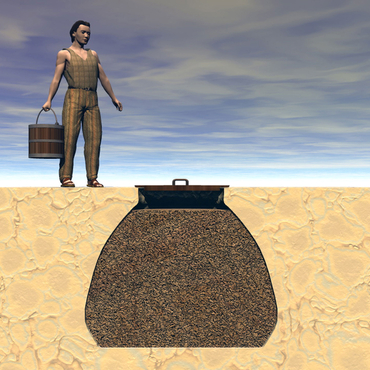
- Home
- Daily life
- Agriculture and subsistence
- Storage
The grain was stored in two types of complementary structures:
- Grain stores were large pits dug into the ground. The grain was stored there away from the light and heat in a confined atmosphere, saturated with carbon dioxide. The grain became dormant; it retained its potential to germinate and its nutritious qualities for a number of years.
- Granaries were small buildings raised above the ground and separate from the living accommodation. Unlike in storage pits, the grain was stored in a ventilated atmosphere; it was turned over regularly with a shovel to make sure it dried. Control of temperature and humidity prevented insects from multiplying, mould developing and the grain from germinating too soon.
The Gauls reused these grain pits after the harvest had been consumed by turning them into rubbish pits. Once they had been emptied, they were soon filled with all kinds of waste. Some grain is sometimes found among this household waste. These residues provide valuable evidence of the food preparation and agricultural work carried out in and around the site.
Associated media
Open Media Library
